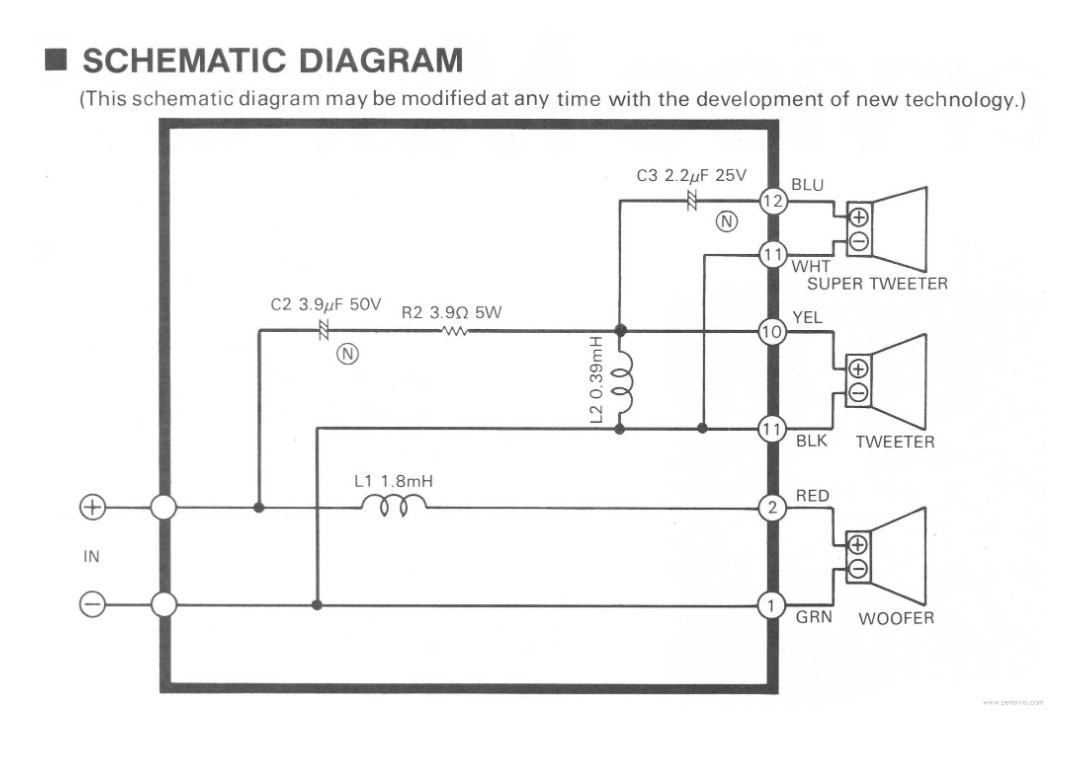this post was submitted on 15 Mar 2024
19 points (95.2% liked)
BudgetAudiophile
1051 readers
1 users here now
A place for AUDIO enthusiast to share, discuss and listen to others people setups
founded 2 years ago
MODERATORS
you are viewing a single comment's thread
view the rest of the comments
view the rest of the comments

Will I get the high frequencies back if I remove L2?
I believe the C2, R2, and L2 are forming a band pass filter for the mid frequencies to the tweeter. Inductors (L) act as low pass filter and capacitors (C) act as high pass filter. The problem with changing anything is that the tweeter (mid) is likely not capable of moving at the super tweeter (high) frequencies nor the low (woofer) frequencies due to its mass (inertia) and stiffness of its diaphragm, etc. Best bet is to replace the broken super tweeters with others as they are actually designed for those high frequencies. It’s possible you tear the diaphragm of the tweeter unless you kept the volume low
If you follow the circuit, for the super tweeter, you have a RC passive high freq filter, while the tweeter has a passive RCL band filter.
Simply removing the super tweeter will remove the high frequency.
Otherwise you need to calculate a new band pass frequency with the new upper freq limit and change the 3.9uF cap accordingly
Edit: by simply removing L2, you will create a high pass filter with the high frequency being the value of the current C2 L2 Filter.
And if you remove L2, you will get all the subwoofer frequency as well.
So simply removing L2 won't work.
You either replace the super tweeter or calculate a new value for C2 and replace it.